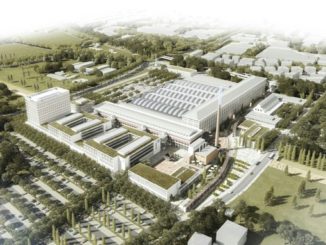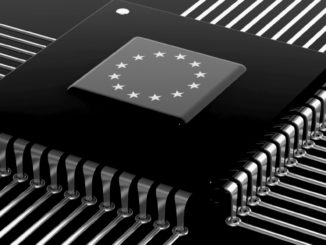
The Partnership for Advanced Computing in Europe (PRACE) has selected five new small and medium-sized enterprises (SMEs) to receive access to supercomputers and HPC expertise under its SHAPE initiative. That would make 50 companies that PRACE has allocated time and support for since the program launched in 2014.
SHAPE, which stands for SME HPC Adoption Programme in Europe, aims to increase awareness of HPC technology with modest-sized European companies who are doing things like digital prototyping, modeling, or high-end data analytics, but lack either the HPC resources or expertise (or both) to fulfill the potential of their applications. The ultimate goal of the program is to increase the competitiveness of these business by improving their computational capabilities.
Besides giving these businesses free access to some of the most powerful HPC machinery in Europe, the SHAPE program also provides human expertise, in the form of software and systems support, which in at least some instances is more important than the supercomputing hardware itself. If you peruse some of the SHAPE case studies, you’ll notice most of these projects revolved around software development.
That includes things like increasing the parallelism of some of these codes, as was done for Ingenieurbüro Tobias Loose (ITL), a German engineering firm that specializes in industrial welding and heat treatment. In this particular case, they used an LS-DYNA solver as the basis for their welding analysis. During the SHAPE work, the solver was scaled to 4,080 cores to run on the Hazel Hen supercomputer at the High Performance Computing Center (HLRS) in Stuttgart. Although that’s only a fraction of the 185,088 cores on the system, apparently it was the first time an LS-DYNA welding simulation had been scaled to that level. HLRS staff supported the effort by providing scripts, test runs, and performance analysis.
In another case, a Spanish company wind energy company, VortexBladeless, was developing a bladeless wind generator that used a multi-physics code, known as Ayla, to couple finite element analysis with fluid mechanics. The wind generator simulation was run on a few hundred cores of the MareNostrum III supercomputer at the Barcelona Supercomputing Center, with an allocation of 100,000 CPU hours. In this case, PRACE provided software development expertise needed to adapt the multi-physics code for the wind generator application.
Besides welding and wind energy, SHAPE awards have been doled out across nearly the whole commercial HPC application landscape, including work in aeronautics, agriculture, naval engineering, combustion, medicine, genomics, and artificial intelligence, just to highlight a few. So far, PRACE has engaged 45 companies under the SHAPE program. This ninth call added five new members.
The first of these is NIER, an Italian engineering consultant company with a staff of around 125 people. For this project, PRACE resources will be used to build a deep neural network (DNN) for classifying human tasks and mental workloads based on eye-tracking, electroencephalogram data, and video analysis. The image data analysis is the most compute and data-intensive element, thus the need for PRACE-level supercomputers. In this case, the work will revolve around identifying bottlenecks in the code and attempting to implement a parallelized version that can run on GPUs, Intel Xeon Phi processors, or multicore CPUs. NIER will be using HPC resources at CINECA in Bologna, Italy.
The second award went to SPARC Industries, an 18-month-old company that is developing a new space propulsion system, and as well as a plasma simulation tool for both space and non-space environments. The company wants to see if the performance of the plasma simulation tool can be increased by running it on GPU-accelerated nodes, with the goal of boosting performance by at least 100X. For this work, SPARC has been paired with the University of Luxembourg, a PRACE member with over a petaflop of HPC capacity.
Submer Immersion Cooling, which we covered back in March, also received a SHAPE award. The company provides liquid immersion cooling for high-performance servers, but in this case, they want to use those same kinds of servers to run CFD simulations for improving their own solution. The goal is to make their CFD application more scalable in order to develop better engineering models for their immersion cooling system. This project will take place at the Barcelona Supercomputing Center (BSC).
BSC will also be hosting LVD Biotech, a company that develops advanced medical devices and therapies for cardiovascular disorders. The project’s main focus will be on modeling stents and for this they will be using BSC’s Ayla multi-physics code, the same one used by wind generator simulation described above.
Neuralbit Technologies, a software startup that uses big data and machine learning technology, is the fifth SHAPE awardee. They offer a tool to provide early detection of forest fires based on real-time input from a sensor network that can detect smoke. The data is used to predict the location, intensity, and likely development of a fire. The goal here is to develop a machine learning algorithm that can do this with some usable level of accurately. The project, known as FireFinder, will be supported by the Poznań Supercomputing and Networking Center (PSNC).
If you have an SME business in Europe that relies on HPC and you want to take a shot at supercomputing, the next SHAPE call will be open for submissions on October 1, 2019.





Be the first to comment